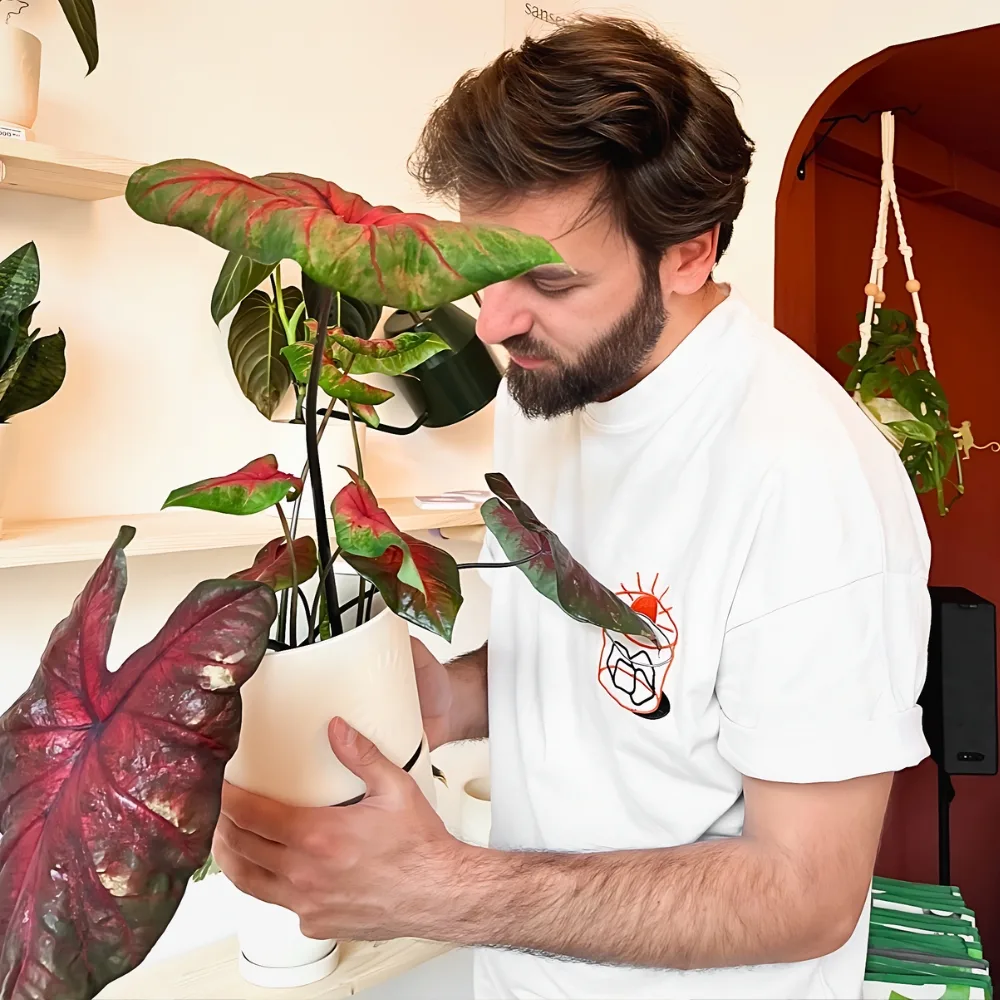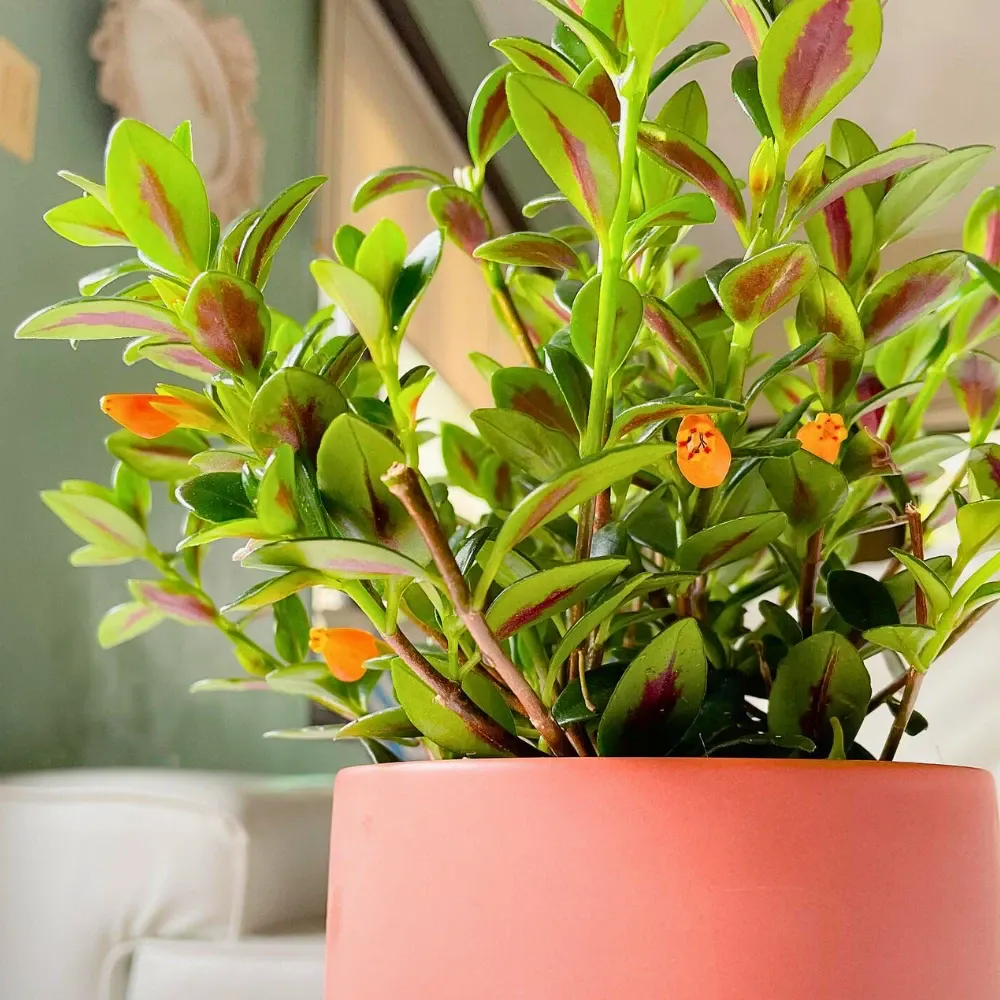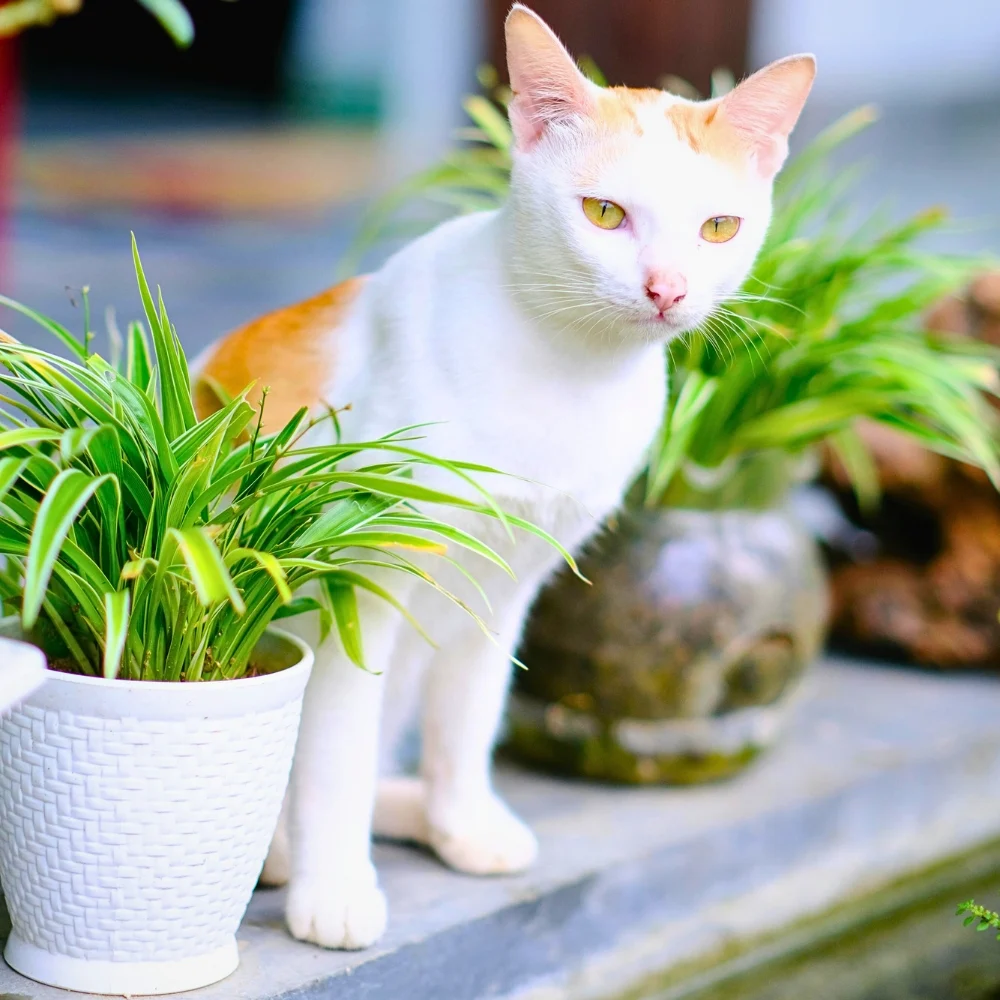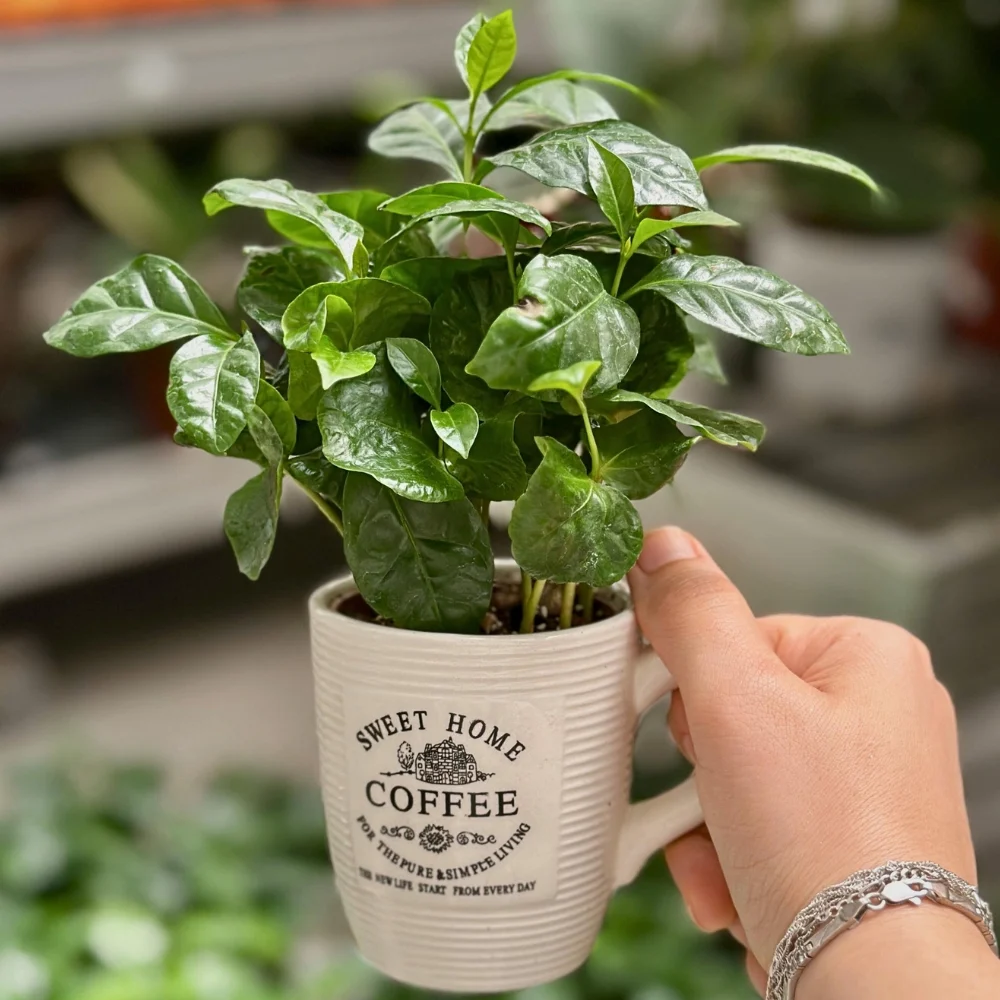Have you ever seen this type of Begonia before? Begonia ferox is a quite recently discovered species, and although it might look like an unfriendly new member to the plant family, get ready to be surprised. If you're a plant geek and love having rare plants decorate your interiors, this one is probably for you. Yikes and spikes, but incredibly beautiful!
Begonia Ferox - A Crazy and Funky Look at This Plant
Begonia ferox is one of the funkiest foliage plants you will ever come across, so take advantage of the uncommon plant frenzy. Hailing from the limestone regions of China, it features ferociously bulleted leaves that belong in every begonia fanatic's collection. The Latin name of this cultivar, Ferox, translates to fierce-looking or wild-looking. And it is a real showstopper.
Begonia ferox is a species of flowering plant in the Begoniaceae family, native to tropical and subtropical regions of Asia and Africa. The plant got its name due to its fierce-looking leaves with very prominent bullae. The leaves are covered in these dark red, nearly black spikes. Each spike features a little crimson tip with a projecting white hair that finally breaks off when magnified. The spikes appear as the leaf ages, but they are initially absent in young plants and leaves.
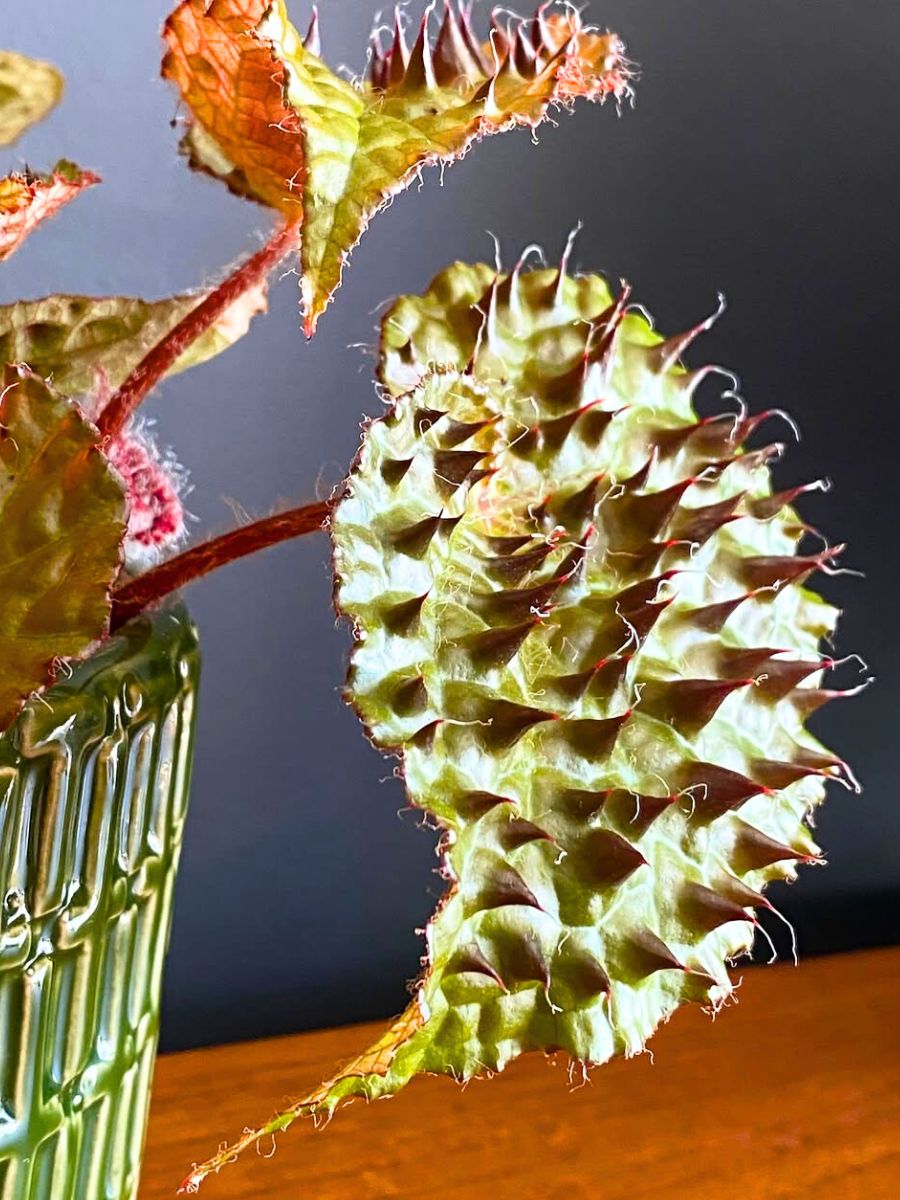
Photo: @thebotanicalniche
The creeping, one-centimeter-thick rhizome of Begonia ferox is rhizomatous. Along the rhizome, nodes give rise to new leaves. The plant is monoecious, meaning that a single individual bears both male and female flowers. Whereas female flowers are pinkish-white, male blooms are pinkish-yellow.
Find out what this spikey plant with black cones is all about. A little hint: it is actually among those plants that feel good to touch.
What Is the Origin of Begonia Ferox?
The Begonia ferox is an unusual yet striking plant that has captured the attention of plant enthusiasts around the world. This rare species originates from China, where the warm, humid climate and diverse landscapes provide the ideal conditions for its growth. Its heartland lies in the southwestern regions of the country, particularly in the province of Guangxi. This area is often referred to as a botanical treasure trove, acting as a central hub for the entire Begonia family.
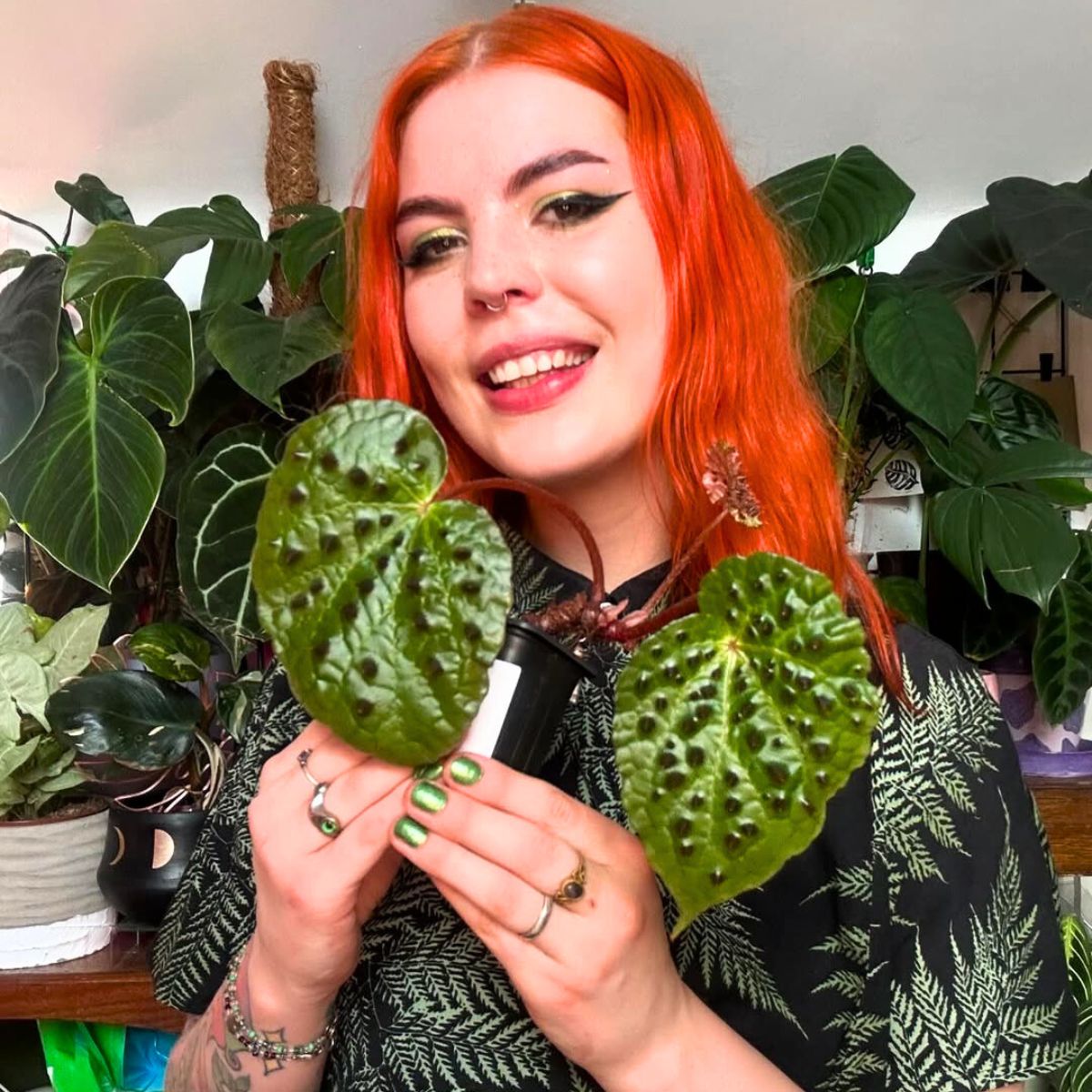
Guangxi’s landscape is dotted with dramatic limestone formations — towering cliffs, rugged hills, and rocky outcrops that are rich in calcium. These limestone rocks form the natural habitat for many species of Begonia, including Begonia ferox. The plant thrives in the cracks and crevices of these stones, where water collects and organic matter provides nourishment. The porous nature of limestone also helps regulate moisture, preventing the roots from sitting in stagnant water while still offering them the humidity they need.
China’s biodiversity is extraordinary, with a vast number of plant families flourishing across its varied ecosystems — from temperate forests to subtropical valleys. Within this abundance, it stands out not only for its rarity but for its distinctive appearance. Its thick, textured leaves and unusual growth patterns make it a botanical curiosity, both in the wild and in cultivation.
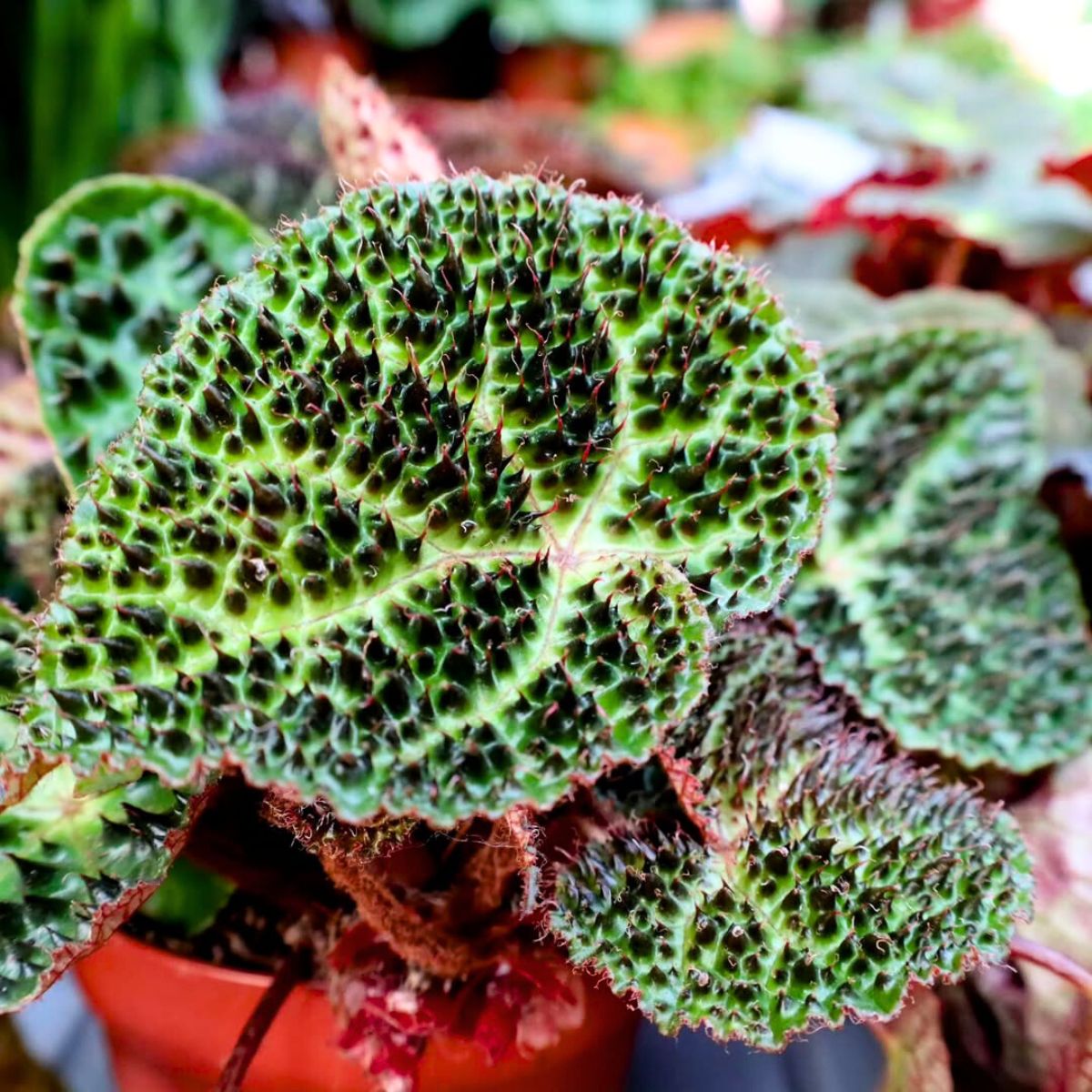
In its native environment, Begonia ferox is part of a delicate ecological balance. The sheltered limestone forests protect it from extreme weather, while the dappled sunlight filtering through the canopy creates the perfect light conditions. These unique natural settings are difficult to replicate outside their homeland, which is why the plant remains a prized find among collectors. Now time to get into the growth and care tips!
Begonia Ferox Care
While it’s a showstopper in any plant collection, it does have specific care requirements. If you’re considering adding this plant to your home or greenhouse, here’s everything you need to know about keeping it healthy and thriving.
Light Requirements for Begonia Ferox
In its natural environment, Begonia ferox grows in the shade of limestone cliffs and forest canopies. This means it is adapted to bright, indirect light rather than direct sun. Too much direct sunlight can scorch its leaves, causing browning or fading. Indoors, it does best near an east-facing window where it can enjoy the morning light, or slightly set back from a south or west-facing window with a sheer curtain to diffuse the sun. Consistent light from multiple angles will keep the plant growing evenly, so rotating the pot every week or so is recommended.
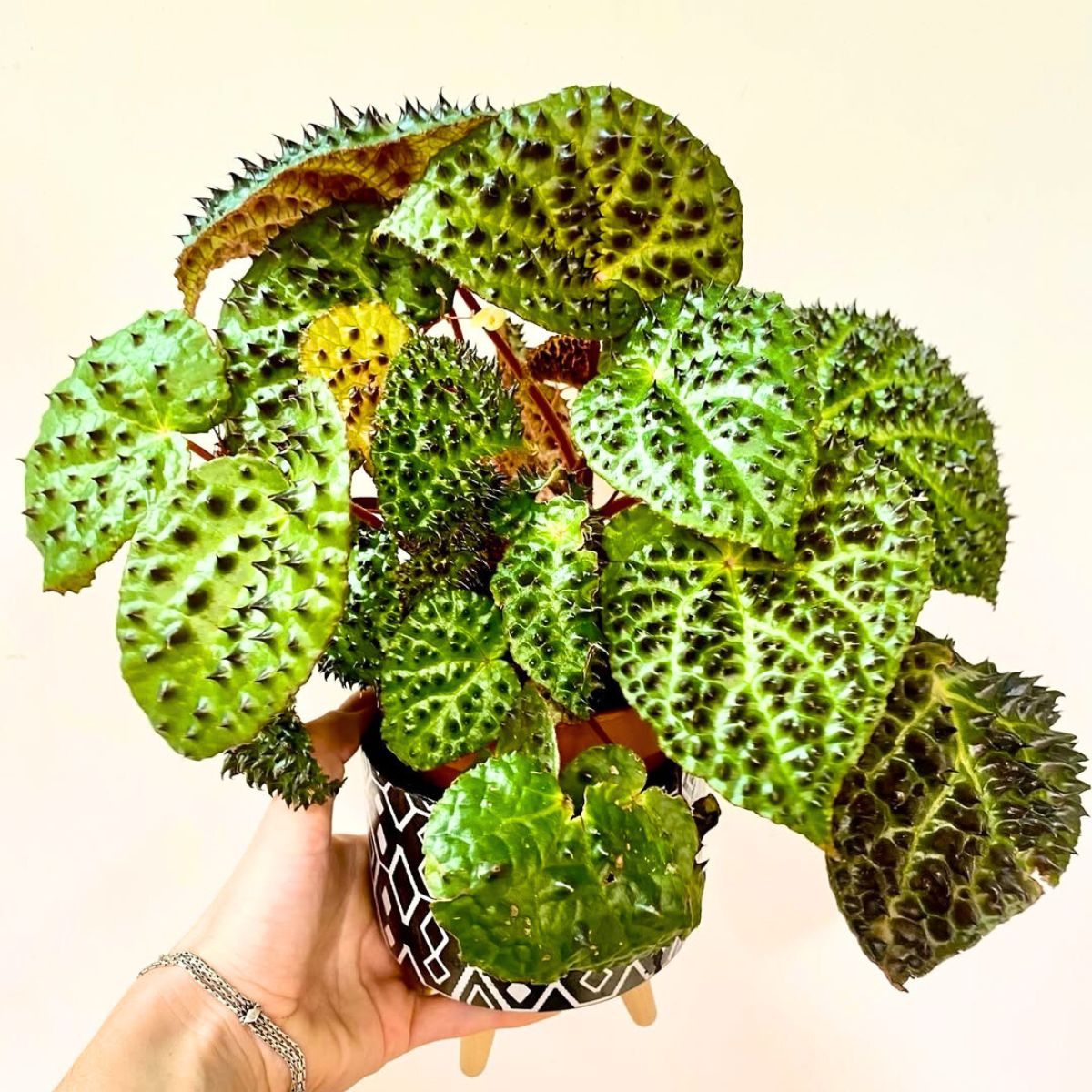
Temperature and Humidity That Fit Begonia Ferox the Best
Begonia ferox flourishes in temperatures between 18°C to 27°C (65°F and 80°F), similar to the mild warmth of its native climate. It should never be exposed to cold drafts or temperatures below 13°C (55°F), as this can cause stress and leaf loss. High humidity is equally important, ideally between 60 and 80 percent. Maintaining this level indoors may require a humidifier, a pebble tray beneath the pot, or grouping the Begonia with other plants to create a naturally more humid microclimate.
Watering Begonia Ferox
Watering this plant is a matter of balance. The soil should be kept evenly moist, but never waterlogged, as excess water can quickly lead to root rot. The best approach is to let the top inch or two of soil dry out before watering again. When watering, pour slowly until water drains from the bottom of the pot, then empty any excess from the saucer. During the cooler months of winter, the plant’s growth slows, so watering frequency should be reduced accordingly.
Soil Requirements That Match Begonia Ferox's Wild Habitat
The Begonia ferox’s wild habitat is rich in porous limestone, which allows water to drain freely while retaining just enough moisture. To mimic this at home, it should be grown in a light, airy soil mix that holds some moisture but drains quickly. A blend of peat moss or coco coir, perlite, and a small amount of orchid bark creates the right balance. The ideal pH for the soil is slightly acidic to neutral, falling between 6.0 and 7.0.
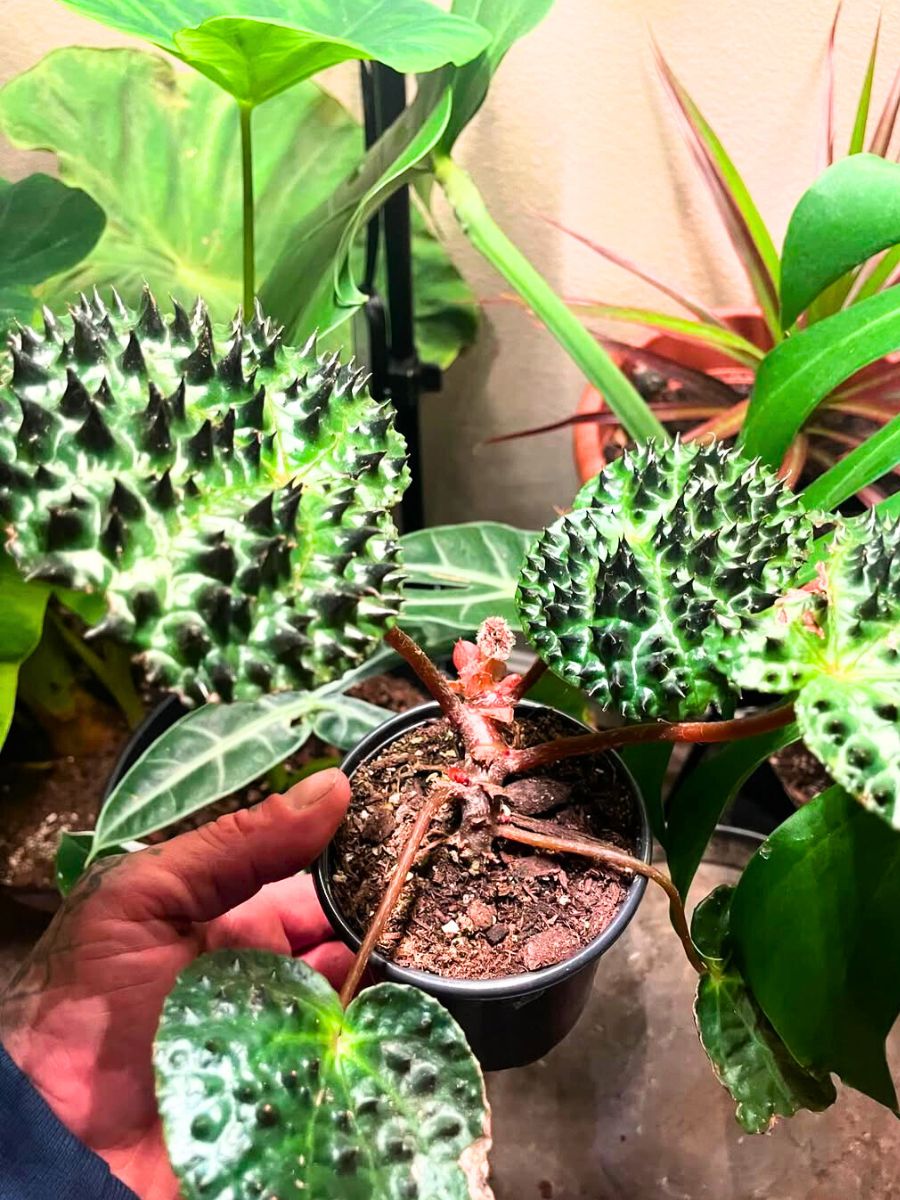
Fertilizing Your Begonia Ferox
During the active growing season, which runs from spring through early autumn, Begonia ferox benefits from regular feeding. A balanced liquid fertilizer diluted to half its strength works best and should be applied every two to four weeks. Fertilizing too heavily can damage the roots and cause leaf burn, so a lighter, consistent feeding schedule is safer than occasional heavy doses. During the plant’s slower growth in winter, feeding should be paused until spring returns.
Potting and Repotting
This rare but beautiful plant does not need frequent repotting and generally prefers to be somewhat root-bound. Repotting every one to two years is usually sufficient, and should be done in spring just before the active growth phase begins. The new pot should be only slightly larger than the old one and must have drainage holes to prevent water from collecting around the roots. Gently handling the plant during repotting will help avoid damaging its rhizomes and leaves.
Pruning and Maintenance of Your Begonia Ferox
Lastly, regular maintenance keeps this type of plant looking its best. Any dead or yellowing leaves should be removed promptly to encourage healthy new growth and improve air circulation. Its textured leaves can collect dust over time, so gently wiping them with a damp cloth will keep them clean and able to photosynthesize effectively. Like many begonias, it can be prone to pests such as spider mites, aphids, and mealybugs, so regular inspections, particularly on the undersides of leaves, are important.
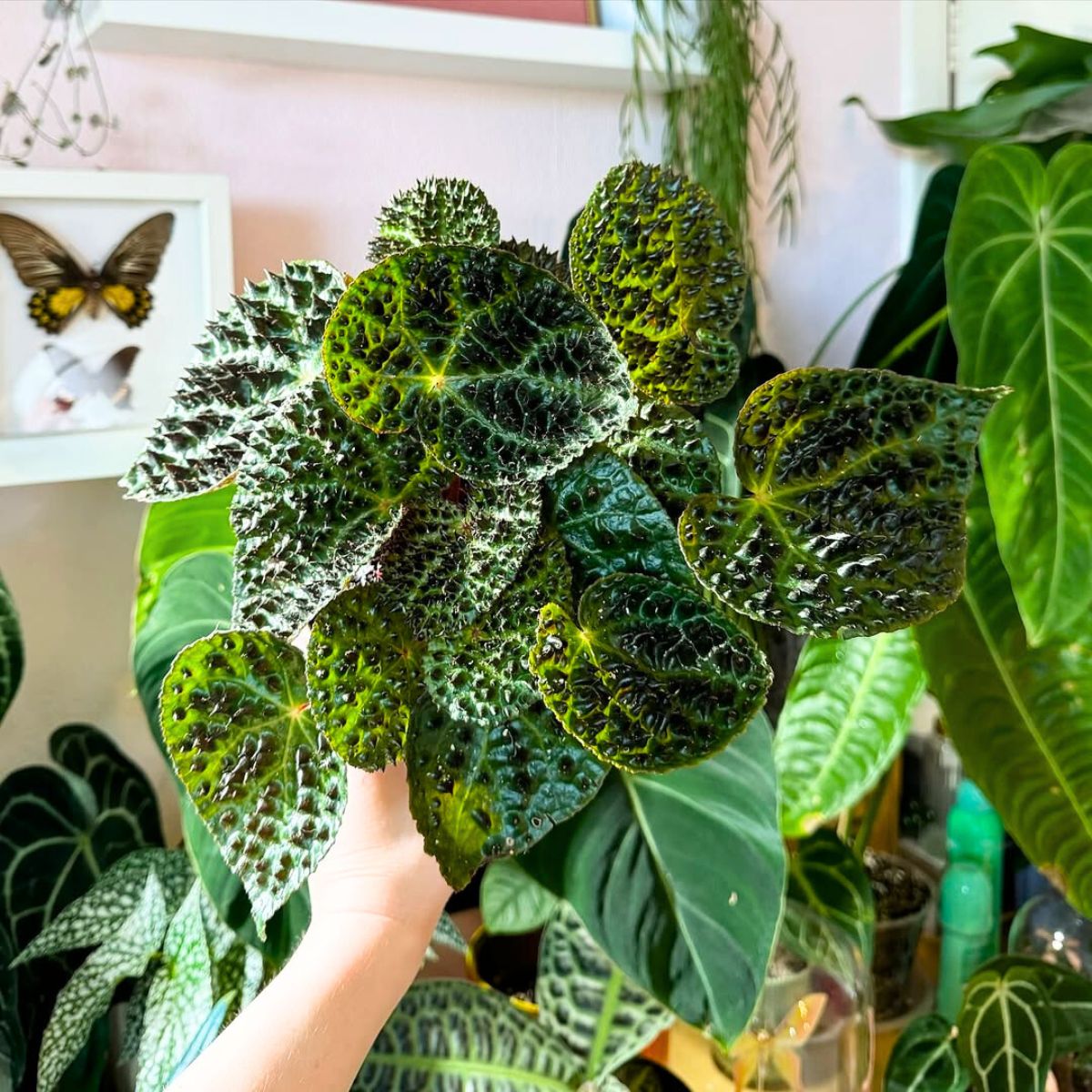
Ferox Begonia Is Easy to Grow and Maintain
Despite its exotic appearance, Begonia ferox is surprisingly easy to grow once its basic needs are met. This plant adapts well to indoor environments as long as it receives bright, indirect light, consistent moisture, and moderate to high humidity. Its slow-to-moderate growth rate means it doesn’t demand frequent repotting or constant attention, making it a manageable choice even for those new to rare plant care.
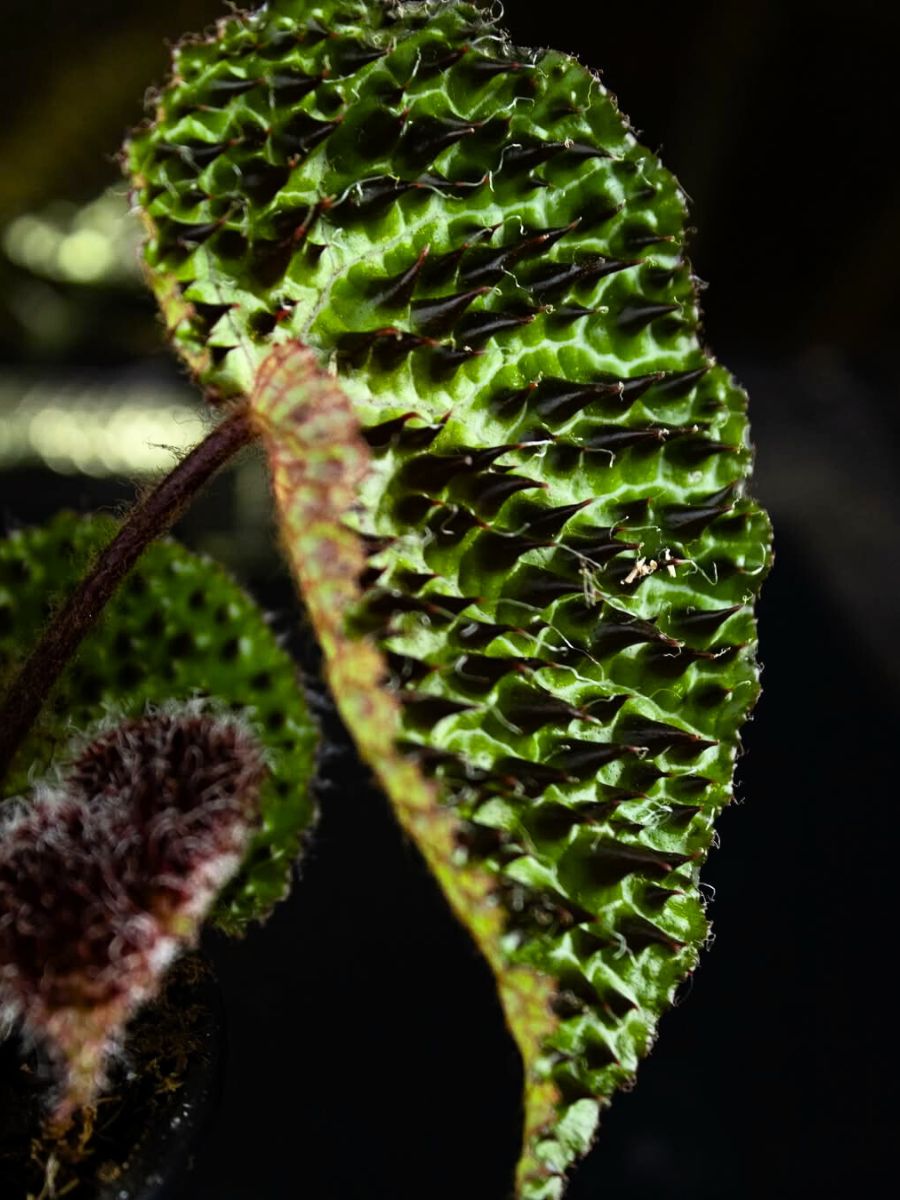
As long as it is kept in a stable, warm location away from harsh direct sunlight and cold drafts, it will reward you with its dramatic foliage and unique texture year after year. Its resilience and ability to thrive in a home setting make it one of the more accessible collector’s Begonias to own.
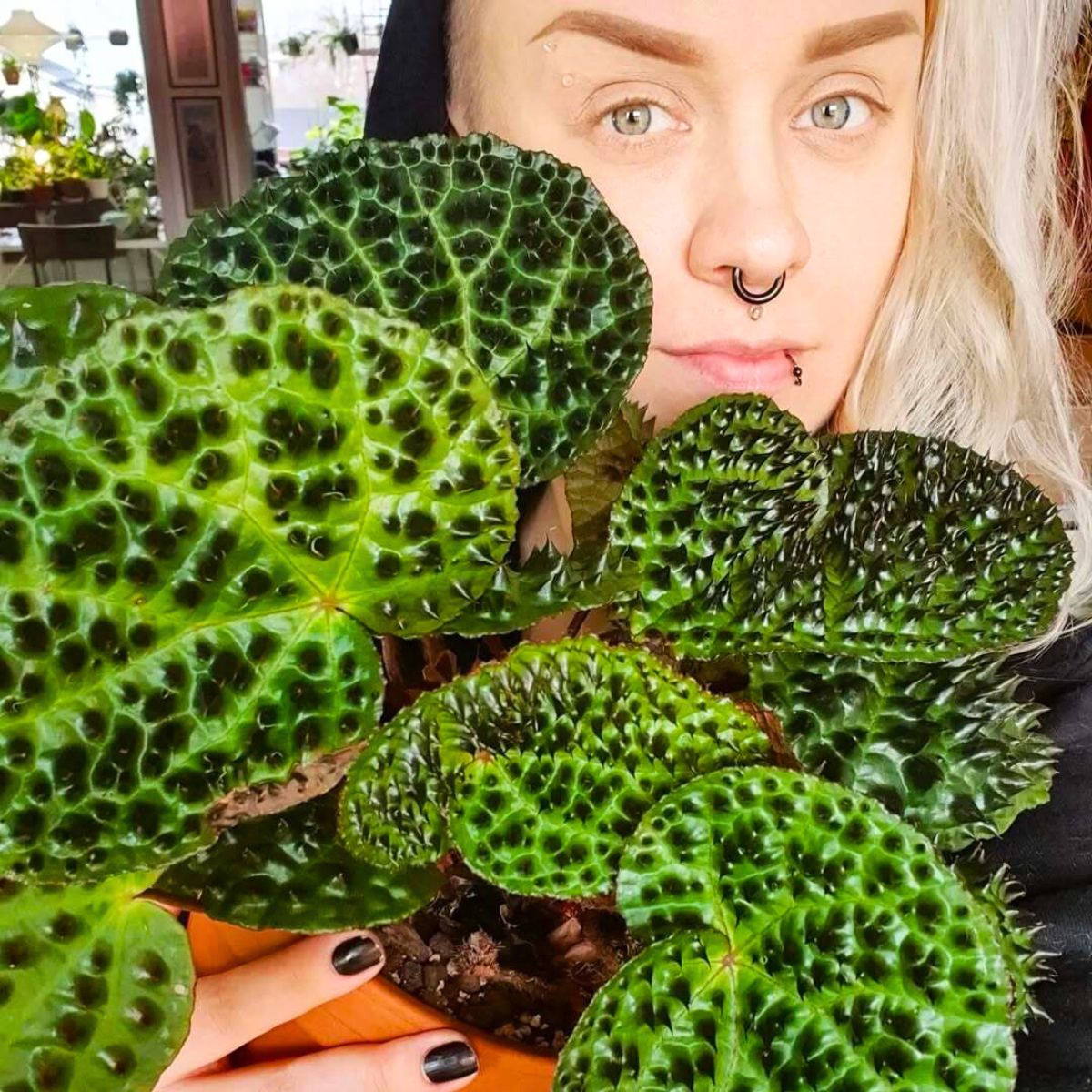
One thing is for sure... the foliage of the Begonia ferox is what causes the most jaw-dropping effects when you first get your eyes on it.




